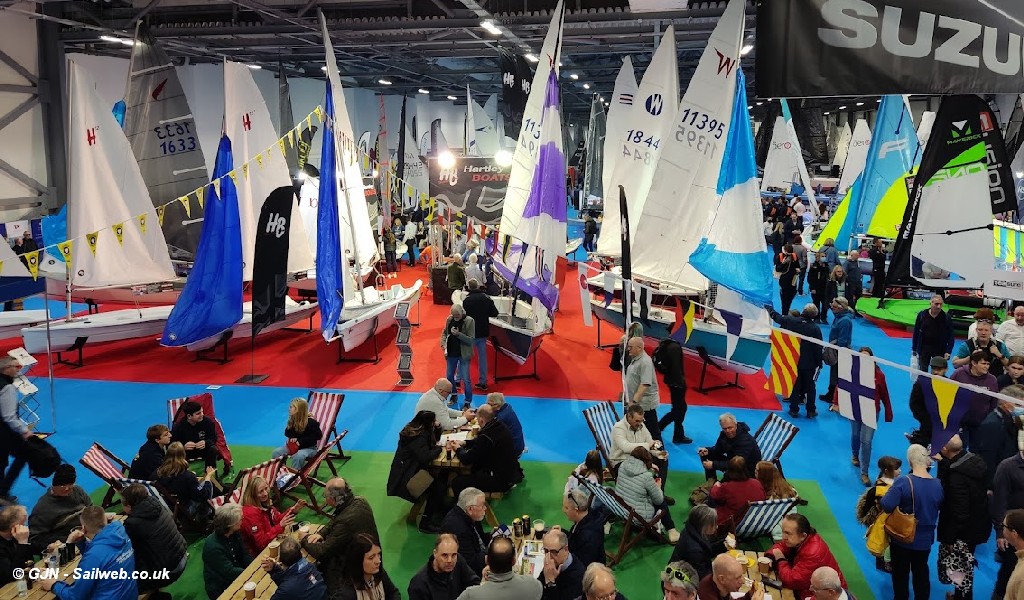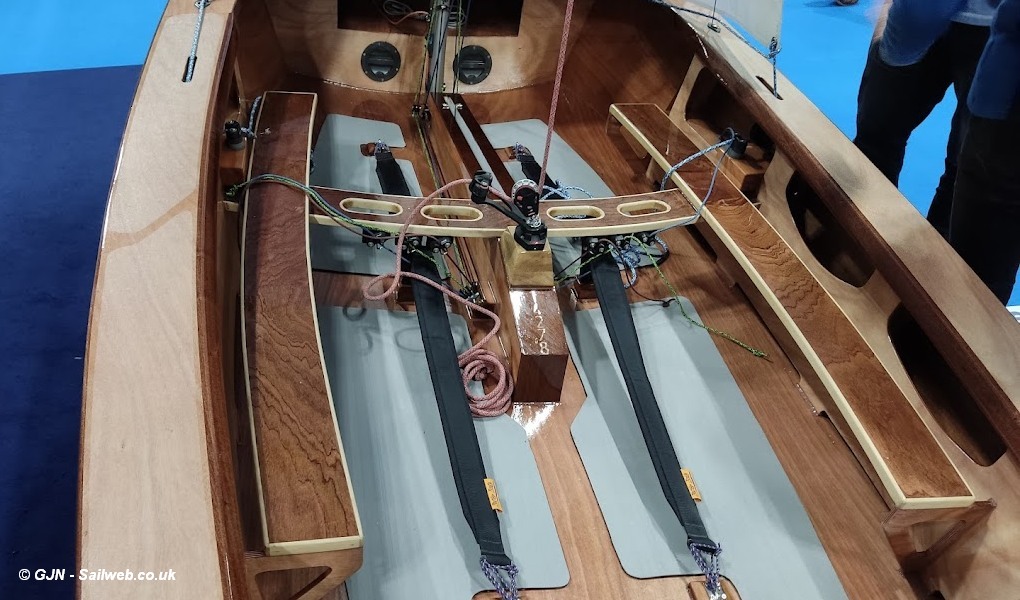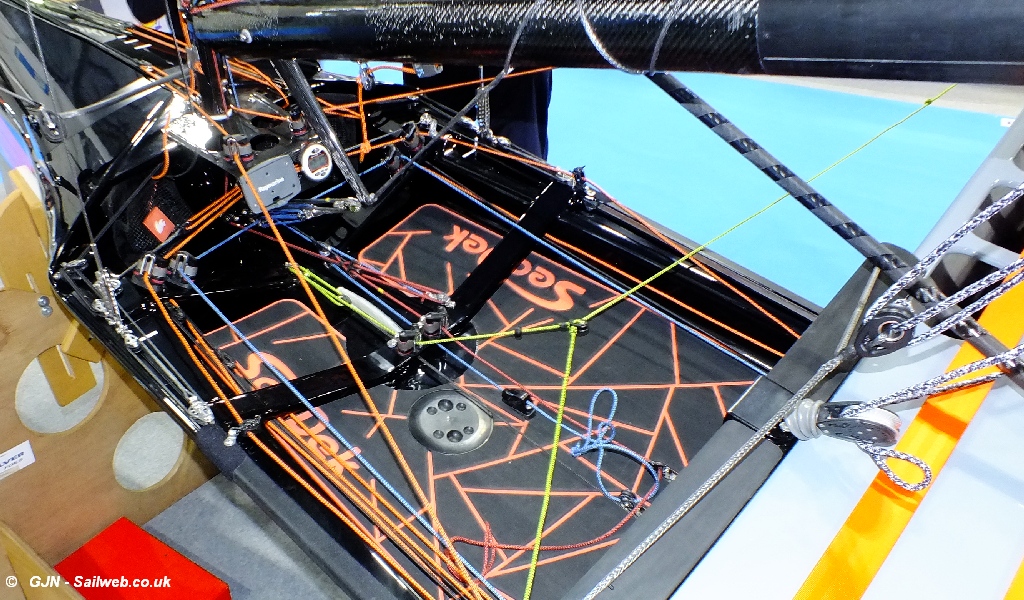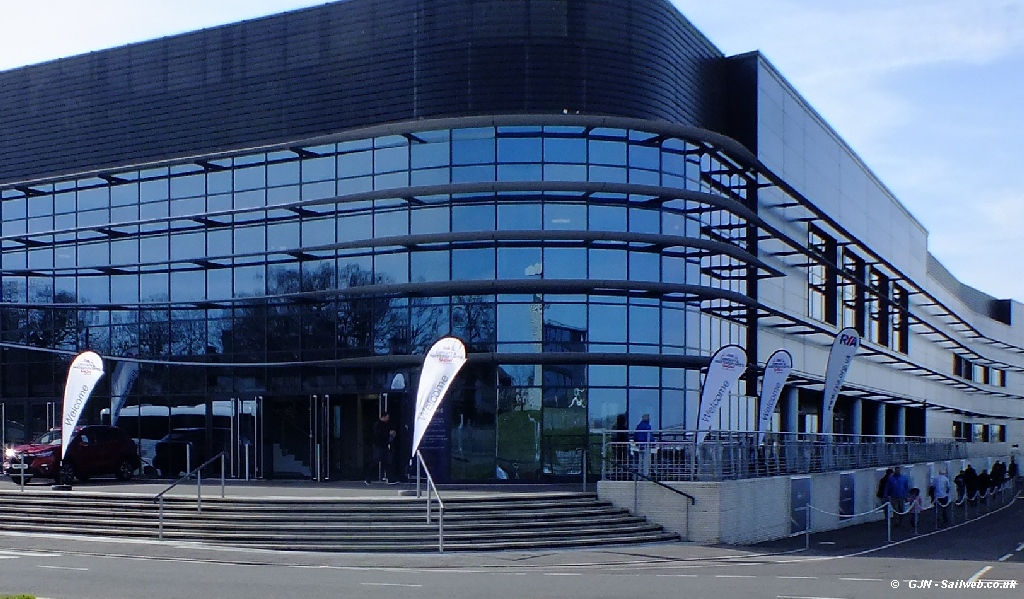‘Thousands of sailing and watersports fanatics from across the UK came together at Farnborough International for the new-look RYA Dinghy and Watersports Show, presented by Suzuki.’
That was the official line . . .
Actually, not such a new-look and perhaps more worrying for the future of the show, not that many thousands – ‘over 7,000’ was the vague official figure, a drop of around 1,000 on the last live show at Alexandra Palace.
That final 2020 Ally Pally show saw 8,000 brave the weather and the approaching coronavirus pandemic.
Here at the new Farnborough International Hall we had the reverse. Fine weather, easy to find location and parking, everyone vaccinated, lockdown restrictions lifted . . . and an all time low attendance!

The expanded show content was fine, better facilities, more room etc., so why the continuing fall in numbers?
Was it the Covid effect? The near two years of mixing and lockdown restrictions still keeping us all away from crowded venues, not if football and other sports crowds are anything to go by.
Is the southern location a step too far . . . the new Birmingham BoatLife-Live show claimed over 10,000 for its inaugural outing or have these get-together day outs just reached their sell-by date?
Or is the original basis of the show its own downfall, after all it felt familiar because of course it is . . . almost every dinghy class on display was over 40 years old.
The dinghy classes that fill our sailing clubs, that we sail and race are old . . . they are Classic designs frozen in time.

Most are from the dinghy boom years of the 50s and 60s, the Enterprise, GP14, Solo, Laser, Wayfarer, Scorpion, OK, Fireball, Mirror, Flying 15, and the second wave of asymmetric dinghies, the RS200, 400, 600, 800 et al and their wannabies.
The ‘one-design’ classes built in their thousands, most of their number long gone to landfill, as are the dozens of small boat builders who produced them.
Unlike the Big-boat classic market we do not have to rebuild a classic, retaining perhaps a plank or the keel to give it authenticity, or recreate an old design from scratch at vast expense. We can just order our 50-year-old classic from the class builder.
The market for new builds is now supplied by a small group of builders who have consolidated the market to supply the small numbers of replacement dinghies required.

In a neat conundrum the few classes that have shown the most advanced designs are the oldest.
The so called ‘restricted classes’ – the Inter 14, National 12, Merlin Rocket and International Canoe and Moth – dinghies built to a design rule that allows the designer/builder to vary the hull shape within set parameters.
Despite originating in the 1930s and 40s they have allowed those classes to amend their design rule to take advantage of modern developments in materials and design, and although these developments out-date the earlier boats, they provide a DNA that maintains their growth.
The show has updated its title to include ‘Watersports’ a recognition that the future is not in recycling old dinghy designs, but in presenting a stage for the future.
And at present that future is boards, foils, kites and wings. Even that other classic, the windsurfer has been overtaken with new developments and changing social patterns.
How many of the 7,000 were there for the watersports and how many for the chance to see the latest incarnation of a 1960s dinghy?
Every year the attendance numbers fall, and every year we get the same upbeat press releases . . . until we don’t, and another show is gone.
When I left I was one of a steady stream. How many will return next year !
Related Post:
RYA Dinghy Show returns after a two year break







